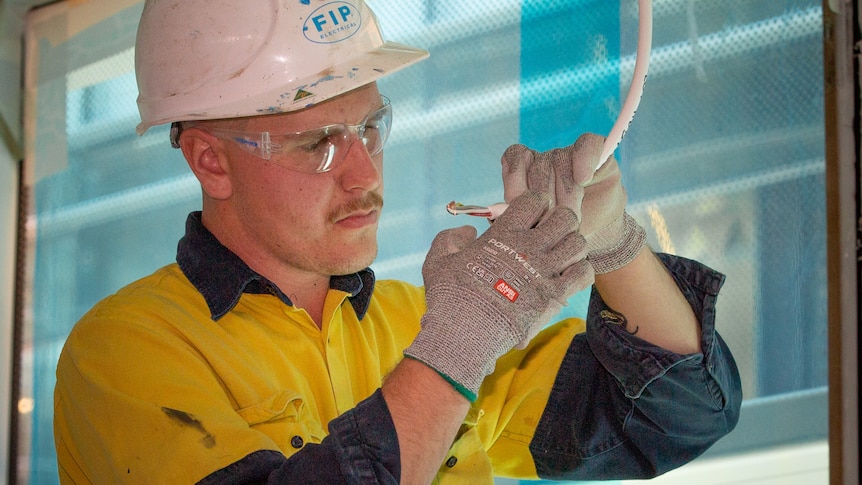
One in eight electrical apprentices are exposed to potentially deadly electrical shocks while on the job, according to a recent survey conducted by the Electrical Trades Union (ETU). The survey gathered responses from over 400 apprentices and highlights the alarming risks associated with inadequate training and mentorship in the industry. The situation is particularly concerning for those who do not begin classroom training until after their first year, with one in four reporting exposure to shocks.
The survey, conducted between April and May 2023, revealed that approximately 10 percent of all apprentice members participated, indicating a widespread issue. Michael Wright, the ETU National Secretary, expressed his deep concern over the findings, stating, “We feel the real rate is much higher. There is no safe level of electrical shock.” This indicates a significant gap in safety measures and training for apprentices entering the field.
Training Delays and Lack of Mentorship
One major contributing factor to the increased risk is the lack of critical safety training. Many apprentices are not receiving essential lessons on CPR, health and safety, and risk management related to electric shock. According to the ETU, this lack of training has heightened the danger faced by apprentices, with Wright stating, “It’s a when, not an if, of when we’re going to see more fatalities. It is simply not good enough.” Since 2018, six apprentice deaths have been reported due to electrocution.
Fourth-year apprentice Dominic Lombardi revealed he has experienced two electric shocks during his training. In one incident, he was working unsupervised on a control board when he received a shock of 240 volts. Lombardi described the aftermath, saying, “I was very dizzy for 10 minutes and possibly even more, and it was also that mental stress afterwards because of what I had learned through TAFE, that if it does not kill you in the initial shock, it doesn’t necessarily mean that it’s over.”
Lombardi noted that he hesitated to report the incidents due to concerns about his employer’s reaction, having previously been told that “getting shocked was part of the job.”
Another apprentice, Aaron Koole, also faced challenges during his training. He could not access TAFE until the end of his first year and experienced a shock while replacing light fittings during his third year, shortly after starting with a new employer. He remarked, “It made the hand a bit tingly for a couple of minutes, and yeah, it was one of those situations where it definitely could have been worse.”
Systemic Issues in Electrical Training
The National Electrical and Communications Association (NECA) has highlighted significant delays in getting apprentices into theory training. Tom Emeleus, NECA’s CEO of training and apprenticeships, stated that electricians are waiting up to 18 months for necessary training. He emphasized the need for improved training capacity and restructuring of educational delivery to ensure that safety training occurs early in the apprenticeship.
Data from Safe Work Australia indicates that 22 fatalities have occurred as a result of electrocution among electricians, with another 37 serious claims related to electric shock. The ETU argues that these statistics represent only the “tip of the iceberg,” as many incidents go unreported due to workplace culture pressures.
The growing demand for electricians has further compounded the issue. According to the federal government-appointed council, Powering Skills Organisation, training has decreased by about 40 percent over the past decade, contributing to a shortage of approximately 22,000 apprentices. Wright pointed out that Australia will need up to 42,000 electricians by 2030 to meet future demands.
The ETU’s findings have raised questions about the effectiveness of the taxpayer-funded Apprentice Connect Australian Provider (ACAP) scheme, which allocates $848 million over four years to support apprentices. Many participants reported not knowing their mentor’s name or the support available to them. Koole stated, “I believe I did have a mentor, but to be perfectly honest, I couldn’t tell you who they were.”
Wright called for the government to improve the allocation of funds to ensure apprentices receive the support and training they deserve. “At the same time we’re having this critical shortage in our trades, we’re having 45 percent of apprentices getting mistreated so badly — not getting the support, not getting the training they deserve,” he said.
As the industry grapples with these challenges, the government is engaged in ongoing discussions regarding training capacity across vocational education and training (VET) systems. Andrew Giles, the Minister for Skills and Training, emphasized the importance of safety in apprenticeships, stating, “Every apprentice deserves to be safe and feel safe in the workplace.”
In the 2025–26 budget, the Australian government committed an additional $722.8 million over four years to the Australian Apprenticeship Incentive System, which includes $626.9 million for the new Key Apprenticeship Program, initiated on July 1, 2025. This funding aims to bolster support for apprentices throughout their training, addressing the pressing need for a safer and more efficient training environment.






